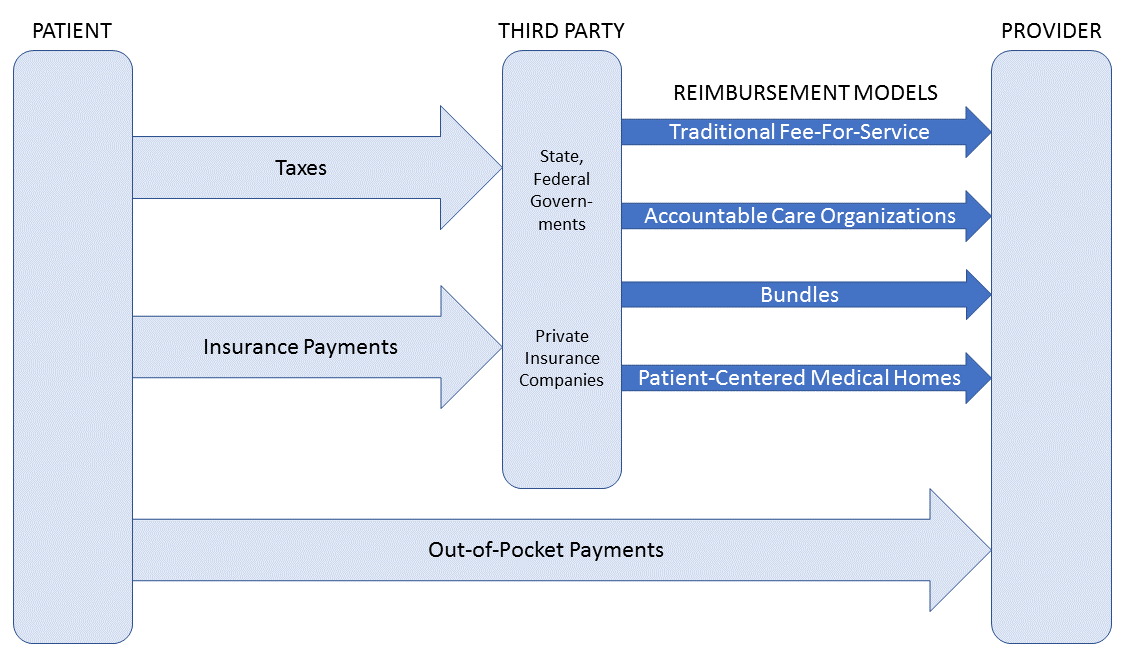A century ago, money used to flow directly from the patient to the provider for medical services provided. Today, however, healthcare finance is more complex, with employers and governments becoming increasingly involved, and new models emerging in relation to physician reimbursement. In the US, healthcare financing is no longer completely private; in order to assist the indigent and elderly populations, state and federal governments use taxes collected from citizens to fund Medicaid and Medicare, which are government-sponsored means of paying for healthcare for the poor and elderly, respectively. Once the money reaches the various third parties (insurance companies and/or the government), or while it is still in the possession of the patient, the money must be distributed to the physicians using a variety of payment models. In the following diagram, we provide a simplified overview of how money flows within the US healthcare system.
Much of the analytics in healthcare is a response to the increased emphasis on physician performance and quality, over quantity, of care:
